Solutions Manual
to accompany
Probability,
Random Variables
Stochastic Processes
and
Fourth Edition
Athanasios Papoulis
Polytechnic University
S. Unnikrishna Pillai
Polytechnic University
�
Solutions Manual to accompany
PROBABILITY, RANDOM VARIABLES AND STOCHASTIC PROCESSES, FOURTH EDITION
ATHANASIOS PAPOULIS
Published by McGraw-Hill Higher Education, an imprint of The McGraw-Hill Companies, Inc., 1221 Avenue of the Americas,
New York, NY 10020. Copyright © 2002 by The McGraw-Hill Companies, Inc. All rights reserved.
The contents, or parts thereof, may be reproduced in print form solely for classroom use with PROBABILITY, RANDOM
VARIABLES AND STOCHASTIC PROCESSES, FOURTH EDITION, provided such reproductions bear copyright notice, but may
not be reproduced in any other form or for any other purpose without the prior written consent of The McGraw-Hill Companies, Inc.,
including, but not limited to, in any network or other electronic storage or transmission, or broadcast for distance learning.
www.mhhe.com
�
CHAPTER 2
2 - 1
- -
We use D e M o r g a n ' s l a w :
(a) X + 6 + I + B = AB + A% = A ( B + % ) = A
because
= (01 BB = I01
2-2
2-3
-
If A = { 2 < x ; 5 )
- -
A + B = { 2 < x < 6 )
- -
(A+B)(E)
= { 2 < x < 6 1
-
= { 2 < x < 3 )
B = { 3 < x < 6 1
AB = { 3 < x < 5 )
- -
- -
[ { x < 3 1 + E x > 5 1 ]
+ { 5 < x < 6 1
-
S = {-=-
2-6
Any s u b s e t of S c o n t a i n s a countable number o f elements, hence, i t
can be w r i t t e n a s a countable union of elementary e v e n t s . It i s
t h e r e f o r e a n event.
2-7
Forming a l l unions, i n t e r s e c t i o n s , and complements of t h e s e t s E l )
and {2,3), we o b t a i n t h e following sets:
(01, C11, (41, {2,31, {1,41, {1,2,31, {2,3,41, {1,2,3,41
2-8
I f ACB,P(A) = 114, and P(B) = 113, t h e n
2-10 We use i n d u c t i o n . The formula i s t r u e f o r n = 2 because
P(A1A2) - P ( A ~ I A ~ ) P ( A ~ ) .
Suppose t h a t i t i s t r u e f o r n. Since
we conclude t h a t i t must be t r u e f o r n + l .
2-11 F i r s t s o l u t i o n . The t o t a l number of m element s u b s e t s e q u a l s (")
m
( s e e
The t o t a l number of m element s u b s e t s c o n t a i n i n g 5 e q u a l s
0
Probl. 2-26).
n- l
(m-l)
Hence
Second s o l u t i o n . C l e a r l y , P{C, I
is i n a s p e c i f i c Am. Hence ( t o t a l p r o b a b i l i t y )
A
~
)
= mln i s t h e p r o b a b i l i t y t h a t 5
0
where t h e summation i s over a l l sets A . m
�
2-12
2
(a) P E 6 < t < 8 1 = -
10
(b) ~ { 6
- -
- < t - < 81t > 51 = P ( t , 51
P E 6 r t s 8 1
2
= - 5
2-13
From (2-27) it follows t h a t
Equating t h e two s i d e s and s e t t i n g t l = t O + A t w e o b t a i n
f o r every to. Hence,
D i f f e r e n t i a t i n g t h e s e t t i n g c = a ( O ) , we conclude t h a t
2-14
I f A and B a r e independent, then P (AB) = P (A)P (B) . I f they a r e
mutually exclusive, then P(AB) = 0 , Hence, A and B a r e mutually
exclusive and independent i f f P(A)P(B) = 0.
�
C l e a r l y , A1 = A1A2 + ~
~
hence
i
i
~
I f t h e e v e n t s A
and
1
a r e independent, t h e n
2
hence, t h e e v e n t s A and A a r e independent. Furthermore, S i s
independent w i t h any A because SA = A. This y i e l d s
1
2
P(SA) = P(A) = P(S)P(A)
Hence, t h e theorem i s t r u e f o r n = 2 . To prove i t i n g e n e r a l we use
i n d u c t i o n : Suppose t h a t A
i s independent of A1, ..., A . C l e a r l y ,
a r e independent of B1, ... ,B . Therefore
n+l
n
-
An+l
and An+l
n
2.16 The desired probabilit,ies are given by (a)
(TI ;)
�
2.17 Let Al I A2 and Ad represent tire events
Al = "ball numbered less tha,n or equal to rn is drawn?
A2 = ('ball numbered rn i s drawn"
AS = ('ball numbered greater tillan rn is drawn"
P ( A 1 occu,rs nl = k - 1, A2 occurs n2 = 1 and A3 occurs n3 = 0 )
2.18 All cars are equally likely so that the first car is selected with
probability p = 113. This gives the desired probability to be
2.19 P{'drawing a white bad1 " } = &&
P("atleat one white ball i n k triu,ls ")
= 1 - P("all black balls in k trials")
2.20 Let D = 2r represent the penny diameter. So long as the center
of the penny is at a distance of r away from any side of the square,
the penny will be entirely inside the square. This gives the desired
probability to be
�
2.21 Refer to Exanlple 3.14.
( a ) Using (3.391, we get
(h)
P ( " t w o one-digit and four two-digit numbers1') =
2-22 The number of equations of the form P(AiAk) = P(Ai)P(Ak)
n
equals (*I.
The number of equations involving r sets equals (:).
number N of such equations equals
Hence the total
And since
we conclude that
2-23 We denote by B1 and B2 respectively the balls in boxes 1 and 2 and
by R the set of red balls. We have (assmption)
P(B1) = P(BZ) '0.5
Hence (Bayes' theorem)
P(R\B~) - 0.999
= 0.001
~ ( ~ 1 8 ~ )
�
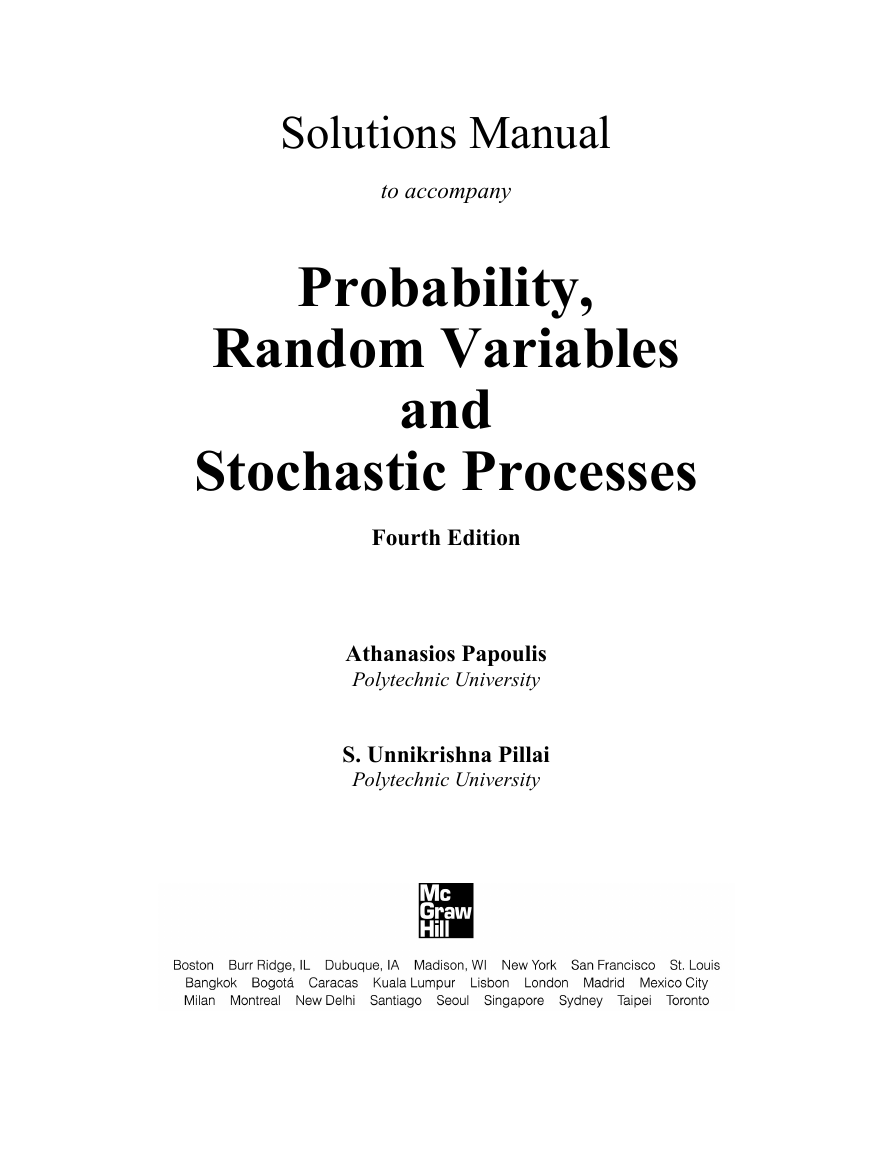
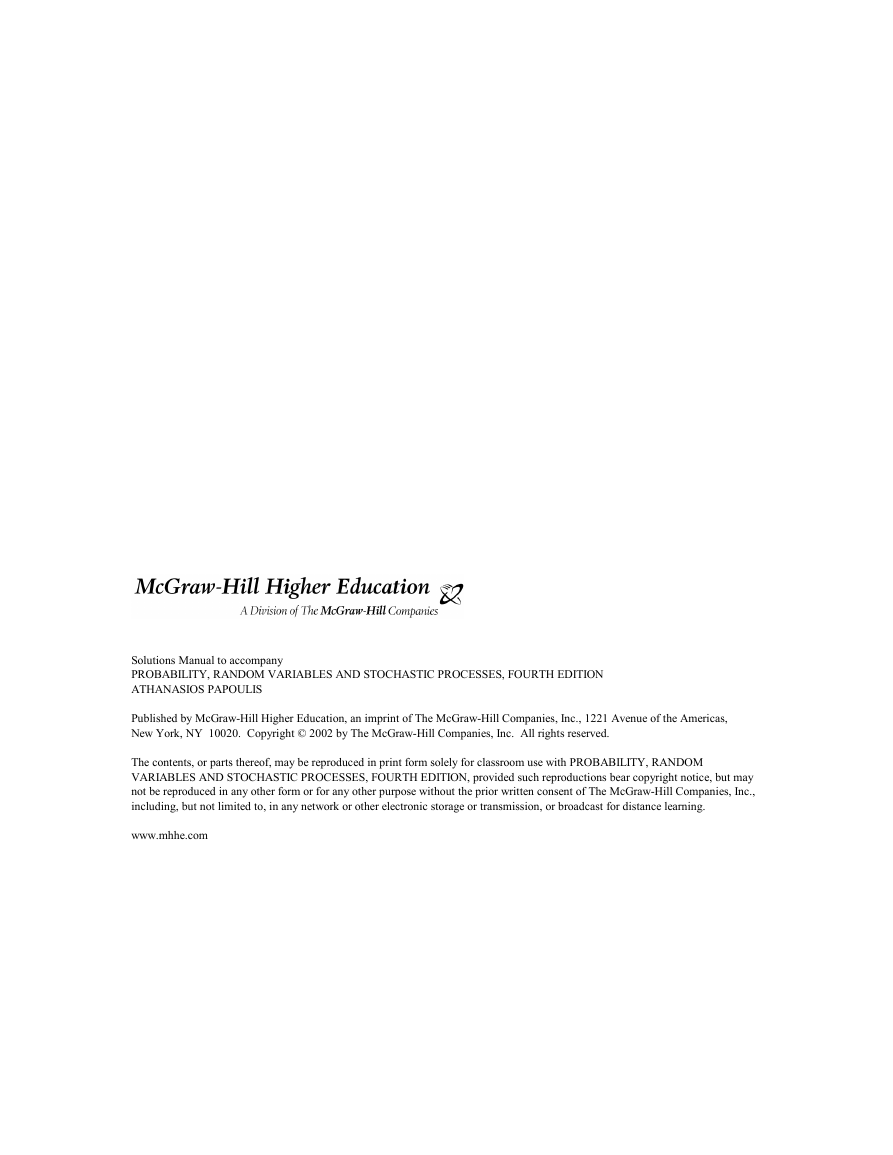

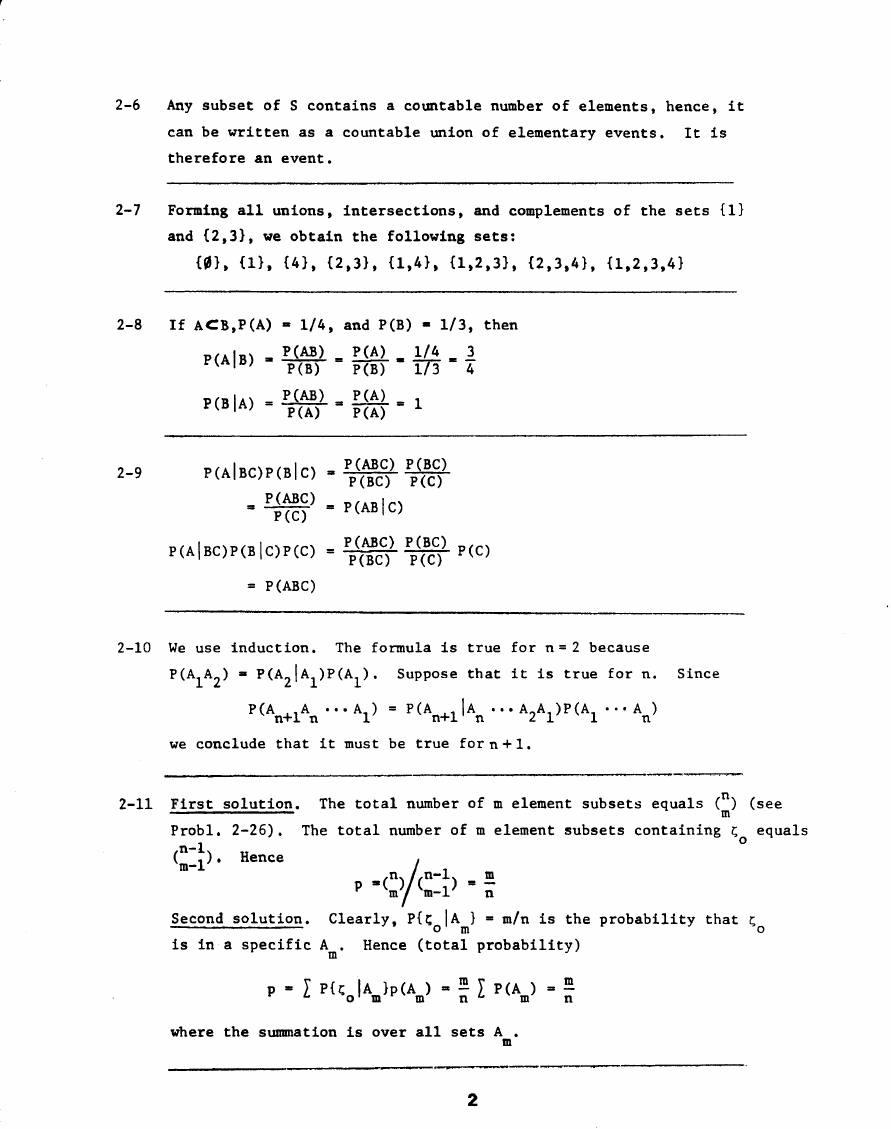
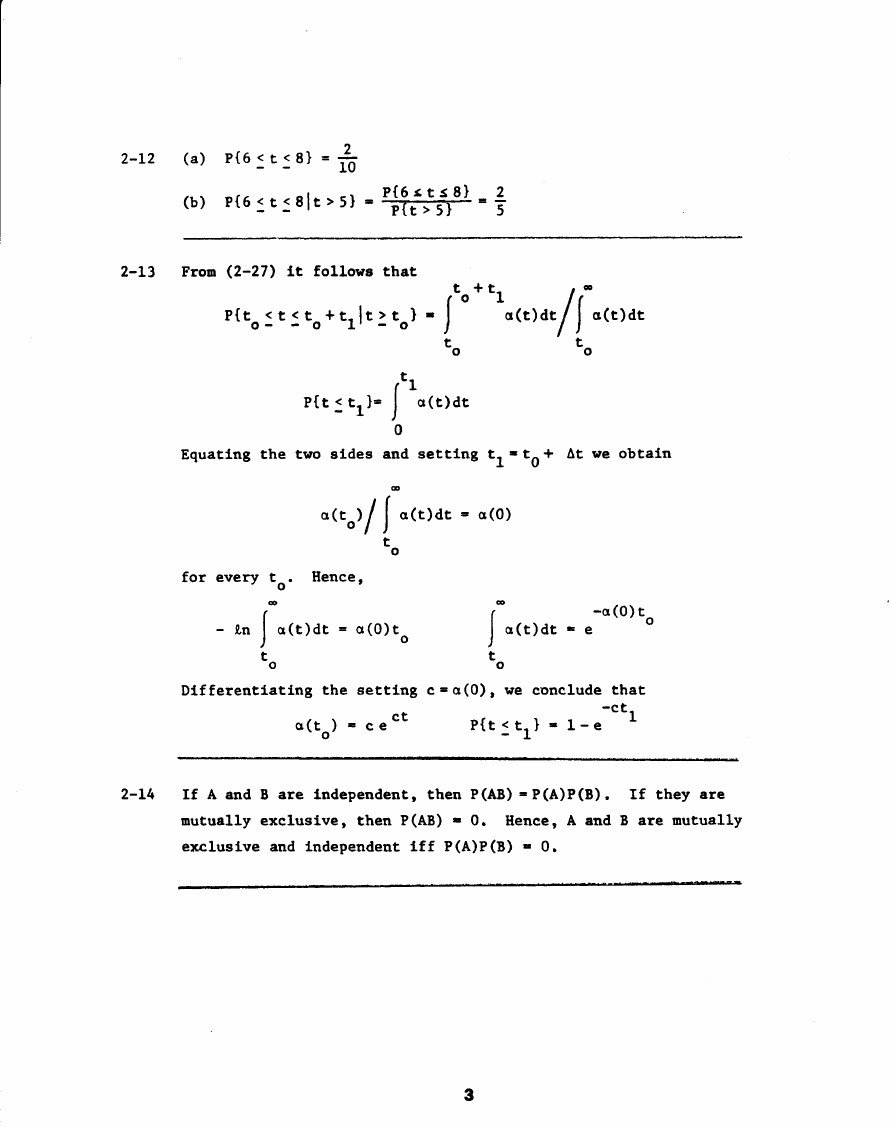
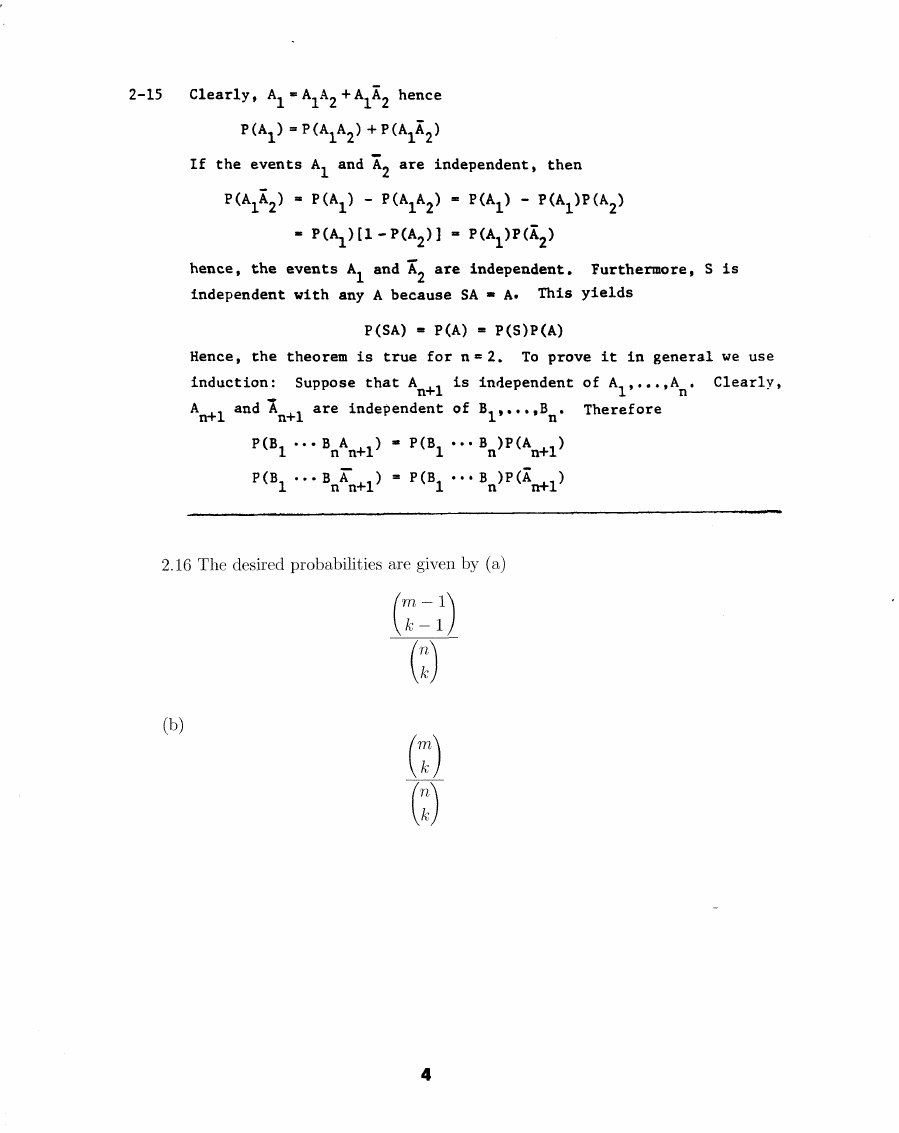
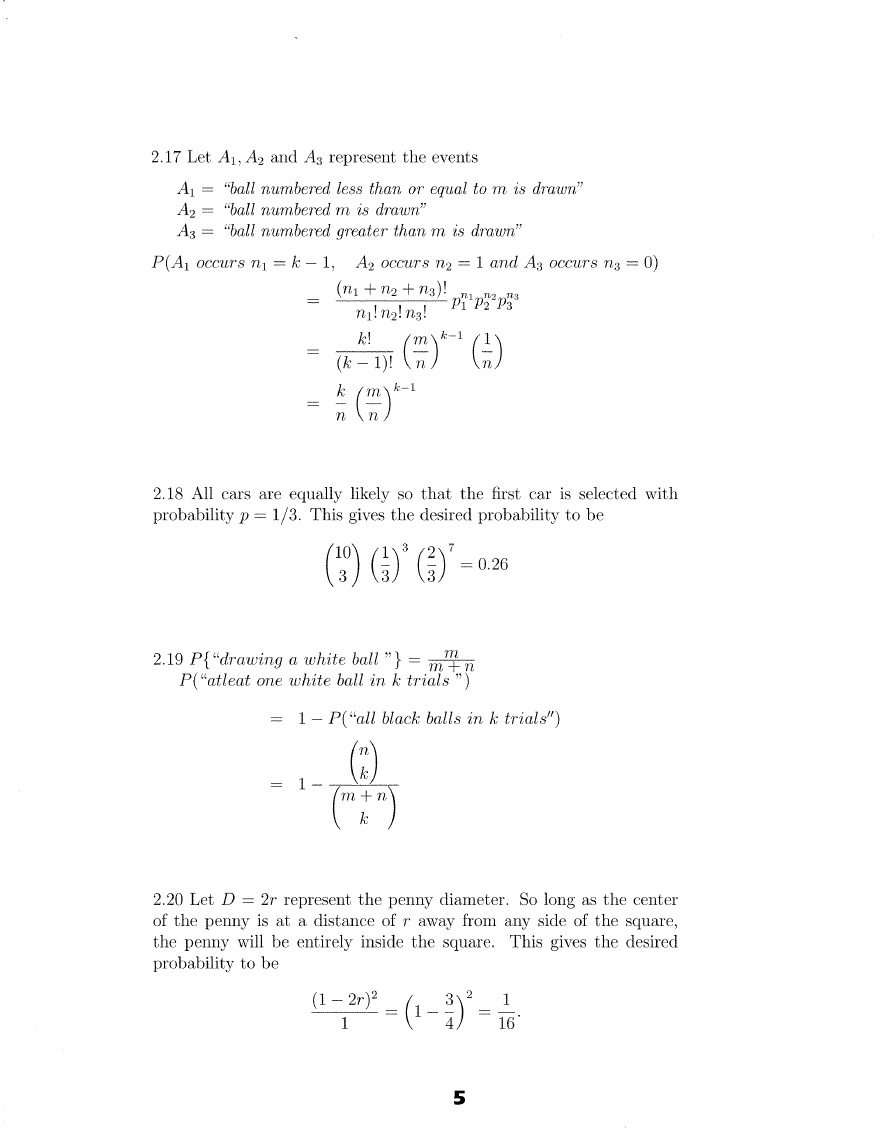









 2023年江西萍乡中考道德与法治真题及答案.doc
2023年江西萍乡中考道德与法治真题及答案.doc 2012年重庆南川中考生物真题及答案.doc
2012年重庆南川中考生物真题及答案.doc 2013年江西师范大学地理学综合及文艺理论基础考研真题.doc
2013年江西师范大学地理学综合及文艺理论基础考研真题.doc 2020年四川甘孜小升初语文真题及答案I卷.doc
2020年四川甘孜小升初语文真题及答案I卷.doc 2020年注册岩土工程师专业基础考试真题及答案.doc
2020年注册岩土工程师专业基础考试真题及答案.doc 2023-2024学年福建省厦门市九年级上学期数学月考试题及答案.doc
2023-2024学年福建省厦门市九年级上学期数学月考试题及答案.doc 2021-2022学年辽宁省沈阳市大东区九年级上学期语文期末试题及答案.doc
2021-2022学年辽宁省沈阳市大东区九年级上学期语文期末试题及答案.doc 2022-2023学年北京东城区初三第一学期物理期末试卷及答案.doc
2022-2023学年北京东城区初三第一学期物理期末试卷及答案.doc 2018上半年江西教师资格初中地理学科知识与教学能力真题及答案.doc
2018上半年江西教师资格初中地理学科知识与教学能力真题及答案.doc 2012年河北国家公务员申论考试真题及答案-省级.doc
2012年河北国家公务员申论考试真题及答案-省级.doc 2020-2021学年江苏省扬州市江都区邵樊片九年级上学期数学第一次质量检测试题及答案.doc
2020-2021学年江苏省扬州市江都区邵樊片九年级上学期数学第一次质量检测试题及答案.doc 2022下半年黑龙江教师资格证中学综合素质真题及答案.doc
2022下半年黑龙江教师资格证中学综合素质真题及答案.doc